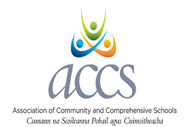Numeracy
As part of the National Literacy and Numeracy strategy we at JTBCS acknowledge the importance of integrating numeracy into the curriculum and emphasise that improving our numeracy levels will remain an integral part of our teaching and learning strategies for the future. The aim of our Numeracy Programme is to promote the on-going development of a learning community within the school and to enhance proficiency in numeracy.
In 2013 the staff of JTBCS underwent a professional development session on Numeracy, in keeping with the introduction of our Numeracy Programme. In subsequent years we have built on this, focusing on student competence in the use of integers, in interpreting data in graphical form, in the use of fractions, percentages and decimals and in the area of time and money. Teachers across all subject departments are encouraged to identify numeracy moments in their respective subject areas and in the teaching and learning that happens in our classrooms. Emphasis has been placed on the following numeracy strategies to date (2013-2017):
Integers:
Number lines may be displayed in classrooms and a reflection number line, cross-linking with our focus on assessment for learning and the encouragement of student reflection on their learning, is utilised in the teaching and learning experiences of students.
Interpreting data in graphical form:
The creation of, use of and display of information in graphical form is encouraged in the teaching and learning activities that occur in all subject areas, both in the classroom and as part of home learning.
A print rich numeracy environment is encouraged, with an emphasis placed on the visual display of graphs and charts where applicable.
Fractions, percentages and decimals:
Proficiency with fractions, percentages and decimals is critically important. Improving student proficiency in the use of fractions, percentages and decimals is seen as an essential mathematical skill for explaining, analysing and evaluating information in the learning that happens in the classroom and at home, but equally it is seen as an essential life skill, better enabling students to understand, apply, analyse and evaluate numeracy related problems and tasks as they progress through life.
Proficiency in the use of fractions, percentages and decimals is encouraged where learning opportunities arise across all subject areas in JTBCS.
Students, where applicable, are encouraged to identify, name and explain fractions as part of a whole using concrete models. They are encouraged to demonstrate an understanding of fractions as part of a whole and/or as part of a set/group using models and diagrammatic representations where applicable, and to compare and order fractions. They are encouraged to analyse the relationship of fractions to decimals and to percentages using concrete objects and are encouraged to solve application problems and justify reasonableness of solutions.
The exam cover sheet used in formal assessments has been amended to reflect the emphasis we place on fractions, percentages and decimals in JTBCS. Students are encouraged to convert their exam results from one form to another.
Time and money:
Students are encouraged to develop their use of effective timing during task completion, including completion of assignments, practical activities and investigations and assessments. This encourages the development of student’s self-management skills and their development as self-directed learners.
Teachers and students are encouraged, where possible, to integrate the area of money into their teaching and learning activities e.g. costing estimations, budgeting and so on.
Reflection number line:
In this current academic year, 2017-18, we are continuing to implement the above numeracy strategies and embed them in the teaching and learning that occurs in our school. We are further building on these with an emphasis on the use of the reflection number line, cross-linking with our focus on assessment for learning strategies and the encouragement of student reflection on their learning.
We aim to encourage students to reflect in and on their learning by using the reflection number line to rate their level of understanding on it and then to consider the following questions:
• What I know/ understand?
• What I do not know/ understand?
• What I need to learn in order to connect all parts of what I have learned?
• How would I do it differently next time?
• How could I progress?
As a result it aims to promote deeper thinking and learning. This strategy reinforces the use of previously embedded strategies such as the use of integers and timing in terms of formulating a plan to improve their learning.

